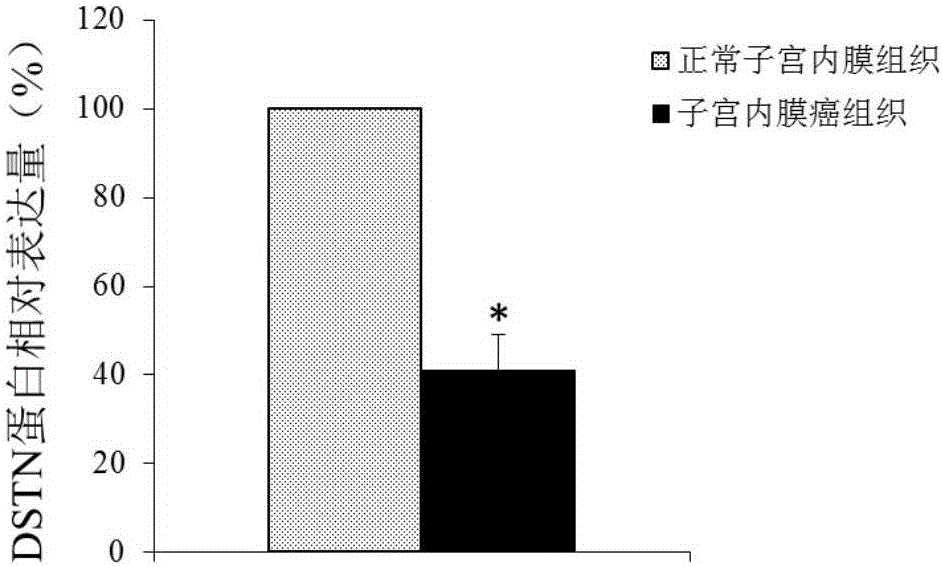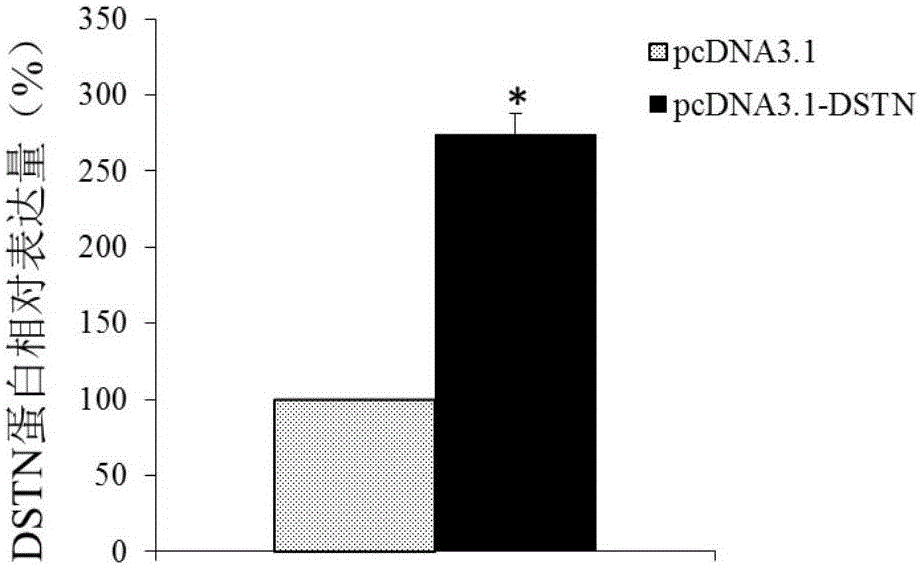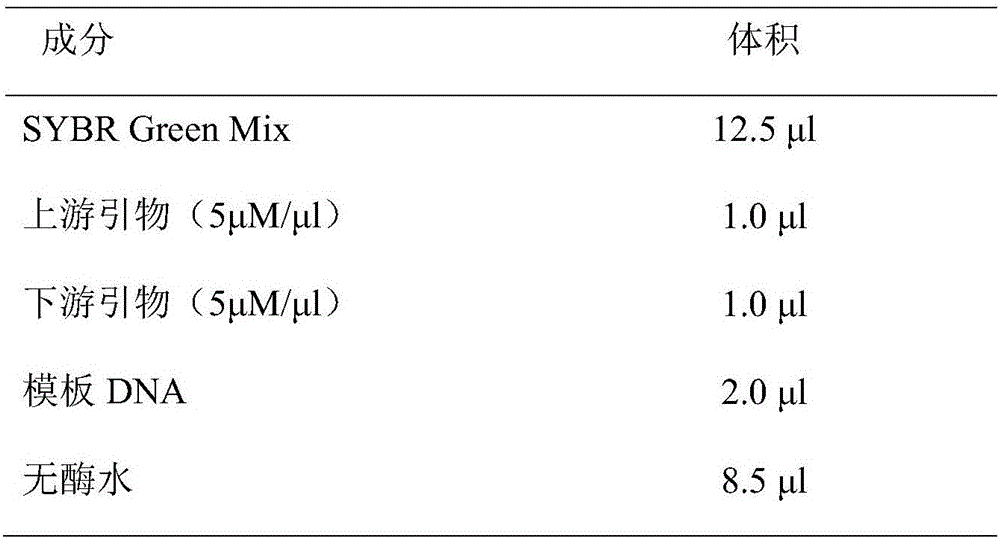DSTN gene and expression product thereof as diagnosis and treatment target of endometrial cancer
An endometrial cancer, gene technology, applied in the field of cancer diagnosis, prognosis prediction, and treatment, can solve the problems of occult metastasis, high mortality, and poor patient response to radiation therapy.
- Summary
- Abstract
- Description
- Claims
- Application Information
AI Technical Summary
Problems solved by technology
Method used
Image
Examples
Embodiment 1
[0069] Example 1 Gene chip screening of differentially expressed genes
[0070] 1. Sample collection:
[0071] Tissue samples of endometrial cancer: Collect endometrial cancer patients, all patients were treated with surgery, 10 cases of surgical paraffin specimens. All patients were diagnosed with endometrial cancer after pathological examination. Other entry conditions were: all patients had not received any treatment before admission: no other malignant tumors; no other hormone-related diseases; complete clinical data.
[0072] 10 patients with endometrial cancer, the average age of onset was 58 years old. The main clinical manifestations of the patients are irregular vaginal bleeding, lower abdominal pain, menstrual disorders, vaginal discharge, etc. Some patients have no obvious symptoms but are found on physical examinations. Endometrial cancer specimens were sectioned by HE staining, and histomorphology was confirmed to be endometrial cancer.
[0073] Normal endometrial tiss...
Embodiment 2
[0084] Example 2 Large sample verification and screening of differentially expressed genes
[0085] Considering that there is no gene in the prior art that has been studied on the correlation between this gene and endometrial cancer as a candidate gene, and considering the results of gene sequencing, the DSTN gene (its expression is down-regulated in endometrial cancer tissue) is selected for verification .
[0086] 1. Sample collection
[0087] According to the method of Example 1, 50 cases of endometrial cancer tissue and 60 cases of normal endometrial tissue were collected.
[0088] 2. Validation at the mRNA level
[0089] 2.1 Extract tissue RNA
[0090] The steps are the same as in Example 1.
[0091] 2.2 Reverse transcription
[0092] Using reverse transcription kit, reverse transcription of lμg total RNA with reverse transcription buffer to synthesize cDNA. A 25μl reaction system was used, and 1μg total RNA was used as template RNA for each sample. The following components were add...
Embodiment 3
[0115] Example 3 DSTN gene overexpression
[0116] 1. Plasmid construction
[0117] The amplification primers are designed according to the coding sequence of the DSTN gene, and the design of the primers is well known to those skilled in the art. Amplify the coding sequence of the full-length DSTN gene from the cDNA library of adult fetal brain (clontech company, article number: 638831), insert the above cDNA sequence into the eukaryotic expression vector pcDNA3.1, and ligate the obtained recombinant vector pcDNA3.1 -DSTN is used for follow-up experiments.
[0118] 2. Cultivation and transfection of endometrial cancer cells
[0119] 2.1 Cell culture
[0120] The Ishikawa3-H-12 cell lines were cultured in RPMI 1640 medium (containing 10% fetal bovine serum, 100U / ml penicillin, 100g / ml streptomycin) in 50ml culture flasks adherently, at 37℃, 5% CO 2 Continuous cultivation in an incubator with saturated humidity.
[0121] 2.2 Cell transfection
[0122] 1. 0.5-2*10 the day before transfecti...
PUM
 Login to View More
Login to View More Abstract
Description
Claims
Application Information
 Login to View More
Login to View More - R&D
- Intellectual Property
- Life Sciences
- Materials
- Tech Scout
- Unparalleled Data Quality
- Higher Quality Content
- 60% Fewer Hallucinations
Browse by: Latest US Patents, China's latest patents, Technical Efficacy Thesaurus, Application Domain, Technology Topic, Popular Technical Reports.
© 2025 PatSnap. All rights reserved.Legal|Privacy policy|Modern Slavery Act Transparency Statement|Sitemap|About US| Contact US: help@patsnap.com



